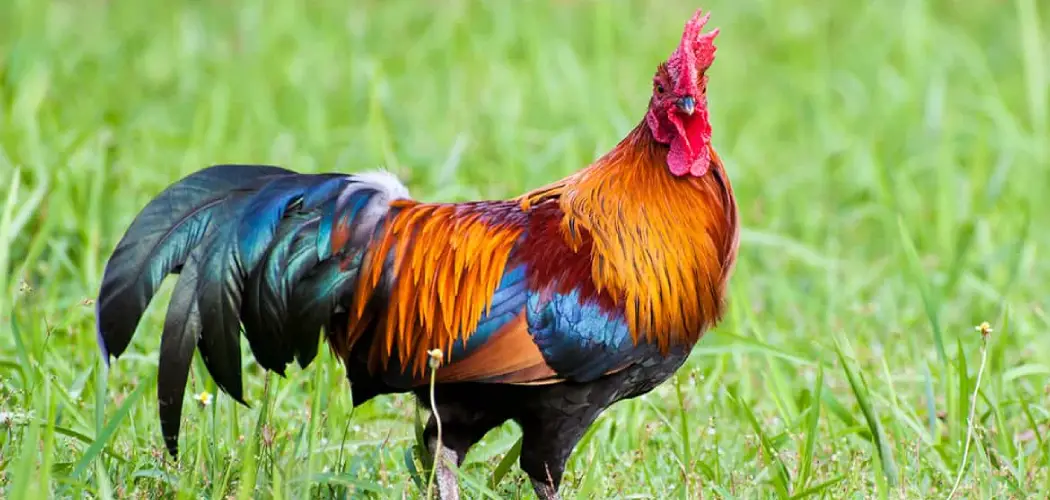Rehoming a rooster can be a thoughtful and responsible decision for poultry enthusiasts facing challenges such as noise ordinances, limited space, or flock dynamics. While these charismatic birds are integral to many backyard flocks, their crowing can sometimes cause friction with neighbors or become unsustainable in urban or suburban settings.
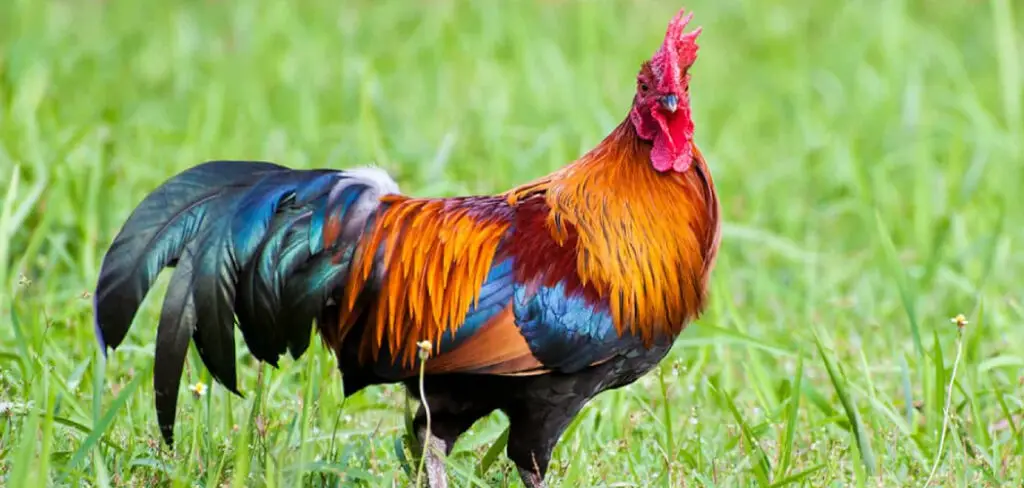
Fortunately, there are compassionate ways to find a new home for a rooster where it can thrive and contribute positively to another flock or environment. From networking within local poultry communities to utilizing online platforms dedicated to animal rehoming, several avenues exist for matching roosters with suitable caregivers.
Additionally, understanding the rooster’s temperament, health, and specific needs can aid in finding the perfect new home. In this guide, we’ll explore practical strategies and considerations for how to rehome a rooster, ensuring a smooth transition for both the bird and its caretakers.
The Responsibility of Rehoming Roosters
When rehoming a rooster, it’s crucial to approach the process with a sense of responsibility and care. This involves more than just finding a new home for the bird; it’s about ensuring that the rooster will be moving to a safe, healthy, and suitable environment where its needs can be adequately met. Ethical rehoming includes vetting potential homes, being transparent about the rooster’s behavior, health status, and any special requirements it might have.
It’s also important to consider the compatibility between the rooster and its potential new flock, as well as the capability of the new caretakers to provide for its well-being. Actions such as home visits, detailed discussions about rooster care, and even follow-up after the rehoming can further ensure that the transition is in the best interest of the rooster.
By taking these steps, you’re not just relocating an animal; you’re contributing to a community of responsible poultry enthusiasts committed to the welfare of their birds.
The Need to Find a Suitable New Home
Identifying a suitable new home for a rooster is paramount in the rehoming process, requiring careful consideration of several factors to ensure a good match. A suitable home is one where the rooster will have adequate space to roam, access to ample food and clean water, and protection from predators. It’s also critical that the new environment is equipped to handle the natural behaviors of roosters, including crowing and their social dynamics within a flock.
Equally important is finding caregivers who understand and appreciate the unique nature of roosters, are knowledgeable about their care, and are committed to providing a long-term, loving home. This may involve screening potential homes for compatibility, including their experience with poultry, their setup, and their intentions for adopting the rooster.
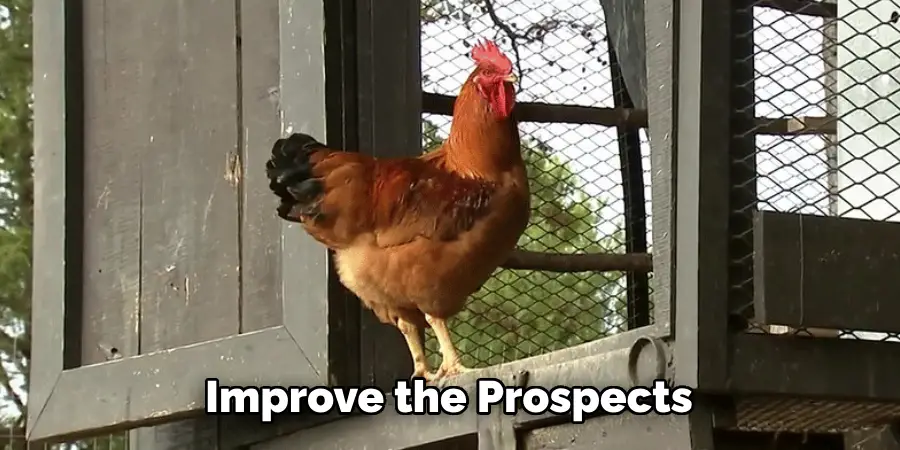
By prioritizing the match between the rooster and its new home, you can vastly improve the prospects for a successful and harmonious transition.
Assessing the Situation
Before initiating the rehoming process, it is essential to carefully assess your situation to understand why rehoming your rooster is necessary and what specific requirements need to be met in the new home. Consider factors such as the rooster’s health, temperament, and any particular preferences he may have in terms of environment or companions.
For instance, some roosters may be more suited to life with a large flock, while others thrive in smaller groups. Additionally, evaluate the legal and social constraints in your area—some regions have strict regulations on keeping poultry, which could affect where your rooster can be rehomed.
This assessment not only helps in finding the most fitting new home for the rooster but also in communicating effectively with potential adopters about what is needed for his care and happiness. Taking the time to understand and articulate these needs will greatly increase the likelihood of a successful rehoming outcome.
Reasons for Rehoming the Rooster
There are various reasons why poultry enthusiasts might find themselves in a position where rehoming a rooster becomes necessary. One of the most common reasons is local noise ordinances. Roosters are naturally early risers and their crowing at dawn (or even throughout the day) can lead to complaints from neighbors, especially in urban or densely populated suburban areas where houses are close together.
Another reason is flock dynamics. Roosters may become aggressive towards each other or towards hens if the flock’s size and composition aren’t well-managed. Overcrowding can exacerbate these issues, necessitating a new home for peace and harmony within the flock.
Space limitations play a crucial role as well. Not every backyard or garden is spacious enough to accommodate a rooster’s needs for roaming and foraging, and inadequate space can lead to stress and health issues for the bird.
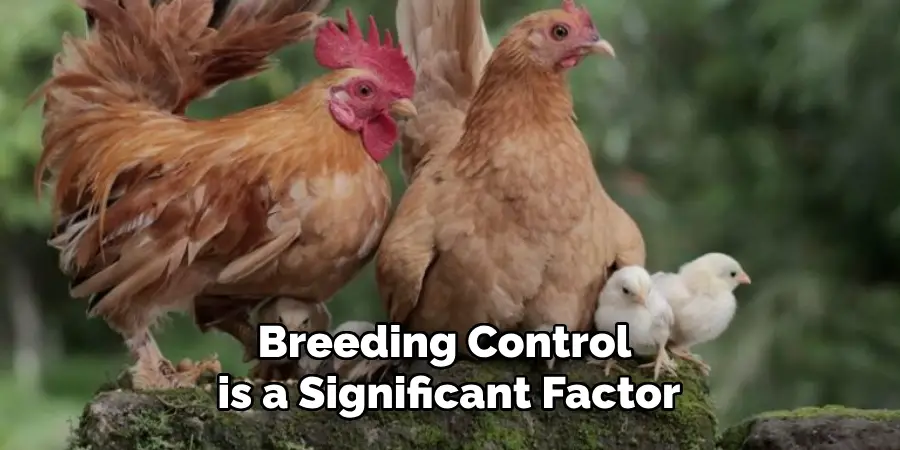
Additionally, breeding control is a significant factor. To prevent unwanted fertilized eggs and the subsequent hatching of chicks, which can quickly increase the flock size beyond sustainable limits, rehoming a rooster may be considered a practical solution.
Lastly, personal circumstances such as relocating to a place where keeping poultry is not allowed, or changes in lifestyle that make caring for a rooster untenable, are also common reasons for rehoming. Regardless of the underlying reasons, the goal is to ensure the well-being of the rooster by finding a new home that is better suited to meet its needs.
Researching Rehoming Options
Once the decision to rehome a rooster has been made, the next step is to research and explore various rehoming options to find the best possible solution. This can start with reaching out to local poultry clubs or farm animal rescue groups, as they often have resources or networks specifically designed to help rehome chickens and roosters.
Utilizing social media platforms and specialised online forums dedicated to poultry can also be tremendously effective. These platforms allow you to connect with a wide audience of poultry enthusiasts who might be looking to adopt a rooster or offer advice on rehoming.
Online listings are another avenue to consider but require careful vetting of potential adopters. It’s crucial to ensure that the rooster’s new home will be a safe and caring environment. Additionally, agricultural supply stores and veterinary offices may offer bulletin boards where you can post a rehoming notice.
Remember to be transparent and honest about your rooster’s personality, health, and any specific needs he might have. Providing detailed information can greatly increase the chances of finding a suitable match. Clear communication about why you are rehoming the rooster also helps potential adopters understand the situation better and prepare accordingly.
Exploring these options can take time, but patience is key in ensuring that your rooster finds a new home where he can thrive.
Exploring Local Regulations and Restrictions
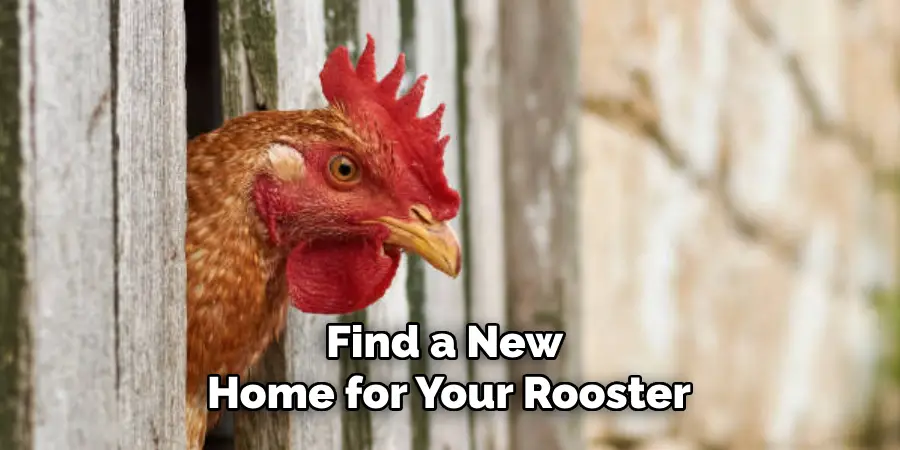
Before proceeding with rehoming a rooster, it’s crucial to be aware of and understand the local regulations and restrictions related to keeping poultry. These laws vary significantly from one area to another and can influence not only your ability to find a new home for your rooster but also the potential adopter’s ability to take him in. Zoning laws, animal control regulations, and specific bylaws addressing noise levels must all be considered.
Residents in urban and suburban areas are often subject to stringent rules regarding the keeping of livestock, including roosters, due to concerns about noise and health. Some areas might allow hens but explicitly prohibit roosters, while others might impose limitations on the number of animals or require specific conditions to be met. For rural areas, restrictions might be more lenient, but it’s still important to verify any applicable laws.
Researching these regulations can typically be done by contacting local government offices, checking municipal and county websites, or consulting with animal welfare organizations familiar with local animal bylaws. Understanding these legal constraints is imperative not only to avoid potential legal issues but also to ensure that your rooster’s future home is compliant with local laws, safeguarding his well-being and the peace of mind of those involved in his care.
Utilizing Online Platforms and Social Media
In the digital age, online platforms and social media networks have become invaluable tools for finding new homes for pets, including roosters. Websites dedicated to poultry, such as backyard chickens forums, and broader platforms like Craigslist or Facebook Marketplace, allow for wide-reaching posts that can connect you with potential adopters beyond your immediate geographical area.
When utilizing these platforms, it’s important to create a compelling and honest post about your rooster. Include details about his personality, needs, and any special care instructions to attract adopters who are well-suited to provide a loving and suitable home.

Social media can further amplify your efforts. Sharing your rehoming quest on your personal social media profiles, as well as in local community groups and specialized poultry or pet rehoming groups, can help tap into your network and beyond. Often, the communal spirit of social media users leads to shares and recommendations, significantly increasing the visibility of your post.
Remember to use relevant hashtags to reach a wider audience and consider tagging local farms, rescue groups, or clubs that may be interested in spreading the word.
While online tools offer expansive reach, it’s crucial to exercise caution and diligence when vetting potential adopters. Engage in thorough conversations, ask for references if possible, and, if feasible, arrange a visit to ensure the prospective home is suitable for your rooster.
By leveraging the power of online platforms and social media wisely, you stand a better chance of securing a happy, healthy future for your feathered friend.
10 Methods How to Rehome a Rooster
1. Assess the Situation:
Before rehoming your rooster, assess the reasons behind the decision. Consider factors such as noise complaints, zoning regulations, or conflicts with neighbors or existing flock members. Determine if rehoming is the best option and if other solutions, such as soundproofing measures or coop modifications, could address the issue.
2. Research Rehoming Options:
Research local farms, sanctuaries, and rescue organizations that may accept roosters. Look for reputable organizations with experience in poultry care and adoption processes. Check their policies, requirements, and availability for accepting roosters to ensure a suitable rehoming option.
3. Networking and Outreach:
Reach out to friends, family, and community members to spread the word about your rooster needing a new home. Post rehoming advertisements in local community forums, social media groups, and online classifieds. Engage with local poultry enthusiasts, homesteaders, and farm networks who may be interested in adopting a rooster.
4. Screen Potential Adopters:
Establish criteria for potential adopters based on the rooster’s needs and temperament. Conduct interviews and home visits to assess potential adopters’ suitability and commitment to caring for a rooster. Discuss expectations, responsibilities, and the rooster’s background with prospective adopters to ensure a good match.
5. Prepare the Rooster for Rehoming:
Prior to rehoming, provide necessary health checks and veterinary care to ensure the rooster is healthy and free from diseases. Groom and groom the rooster to ensure he is clean and presentable to potential adopters. Assemble a rehoming kit with essential items such as food, water, bedding, and care instructions for the rooster’s new home.
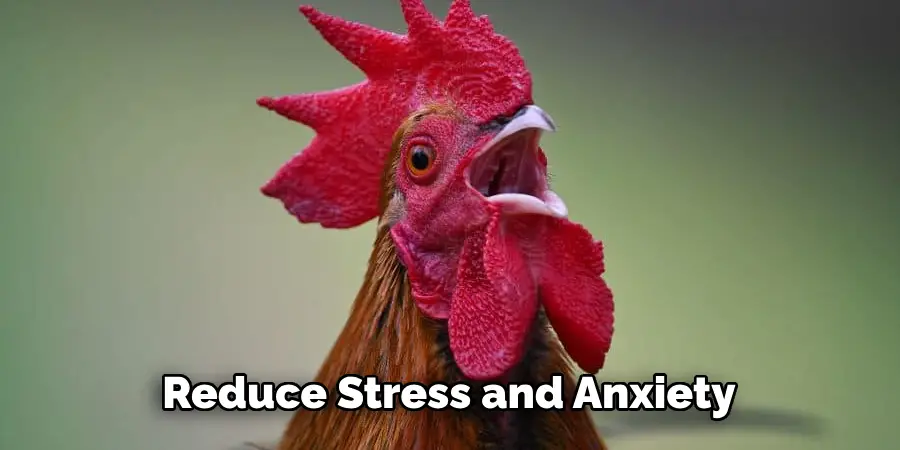
6. Transitioning to a New Home:
Introduce the rooster to his new environment gradually to reduce stress and anxiety. Provide guidance and support to the new adopter during the transition, including tips on housing, feeding, and care. Monitor the rooster’s adjustment and behavior in his new home, and address any concerns or issues promptly.
7. Follow Up and Support:
Check in with the new adopter periodically to ensure the rooster’s well-being and address any questions or concerns. Offer ongoing support and guidance as needed, including advice on behavior, health, and integration with existing flocks. Be prepared to provide assistance or take the rooster back if the adoption does not work out.
8. Handle Rejection or Challenges:
If faced with challenges or rejection during the rehoming process, manage feelings of guilt or sadness by focusing on the positive impact of finding a new home for the rooster. Seek support from friends, family, or online communities who understand the challenges of rehoming poultry. Stay resilient and committed to finding the best possible outcome for the rooster’s welfare.
9. Utilize Online Platforms:
Take advantage of online platforms and social media networks dedicated to rehoming pets and livestock. Post detailed listings and photos of the rooster, highlighting his personality, traits, and care needs. Engage with potential adopters through messaging and inquiries to assess compatibility and suitability.
10. Consider Alternative Options:
If unable to find a suitable new home for the rooster, consider alternative options such as surrendering to a local animal shelter or contacting a poultry rescue organization for assistance. Explore community resources and support networks for advice and assistance in finding a solution that prioritizes the rooster’s well-being.
Alternative Solutions and Options
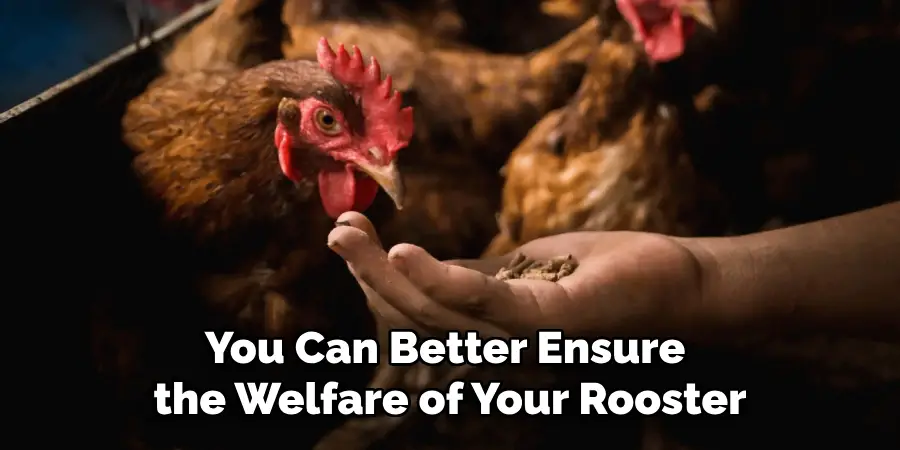
When rehoming a rooster does not seem feasible, it’s vital to consider alternative solutions that may accommodate the rooster’s needs within your current situation or through different channels. Here are some strategies to explore:
- Coop Modifications: Enhance your coop’s design to mitigate potential issues such as noise. Soundproofing the coop or creating a more secluded area can help manage noise levels and keep neighbors happy.
- Behavioral Training: Some roosters may benefit from behavioral modifications to reduce crowing frequency and aggression. Consult with poultry behavior specialists for strategies that can help manage your rooster’s behavior more effectively.
- Partnerships with Local Farms: Establish partnerships with local farms that may not be in a position to adopt but can offer temporary housing or integrate the rooster into their flock over time.
- Educational Programs: Contact agricultural schools, universities, or local 4-H clubs that might be interested in including your rooster in educational or breeding programs. This can provide a meaningful purpose for the rooster while ensuring he is well cared for.
- Sanctuary Sponsorship: If direct rehoming is impossible, look into sanctuary sponsorships where you can financially support the rooster’s care at a sanctuary or rescue organization without physically rehoming him. This can be a viable option for those deeply attached or unable to find a suitable home.
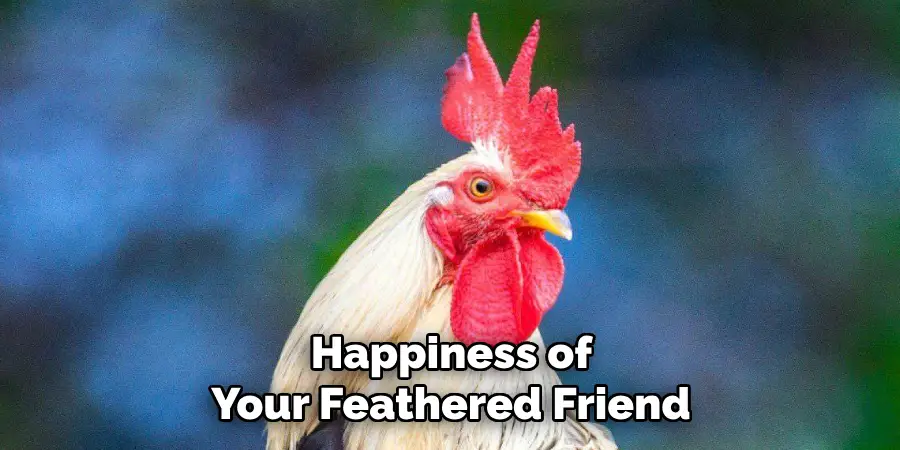
By considering these alternative solutions and options, you can better ensure the welfare of your rooster, addressing not only the immediate need for rehoming but also the long-term well-being and happiness of your feathered friend.
Conclusion
In conclusion, rehoming a rooster is a compassionate and responsible approach to addressing various challenges that arise in backyard poultry keeping. By seeking out suitable homes where roosters can thrive, we not only alleviate potential conflicts but also ensure the well-being of these charismatic birds. Throughout the rehoming process, it’s essential to prioritize the rooster’s health, temperament, and future living conditions, facilitating a smooth transition to its new environment.
Moreover, by networking within local poultry communities and utilizing online platforms, we can connect roosters with caregivers who are equipped to provide the care and attention they deserve. Thanks for reading, and we hope this has given you some inspiration on how to rehome a rooster!
About
Outdoor Fixes is a distinguished figure in the world of Diy design, with a decade of expertise creating innovative and sustainable Diy solutions.
His professional focus lies in merging traditional craftsmanship with modern manufacturing techniques,
fostering designs that are both practical and environmentally conscious. As the author of diy,
outdoorfixes delves into the art and science of outdoorfixes-making, inspiring artisans and industry professionals alike.
Education RMIT University
(Melbourne, Australia) Associate Degree in Design (Outdoor Fixes) Focus on sustainable design, industry-driven projects,
and practical craftsmanship. Gained hands-on experience with traditional and digital manufacturing tools, such as CAD and CNC software.
Nottingham Trent University
(United Kingdom) Bachelor’s in outdoorfixes.com and Product Design (Honors) Specialized in product design with a focus on blending creativity with production
techniques. Participated in industry projects, working with companies like John Lewis and Vitsoe to gain real-world insights.
Publications and Impact
In diy, Outdoor Fixes his insights on indoor design processes, materials, and strategies for efficient production.
His writing bridges the gap between artisan knowledge and modern industry needs, making it a must-read for both budding designers and seasoned professionals.

